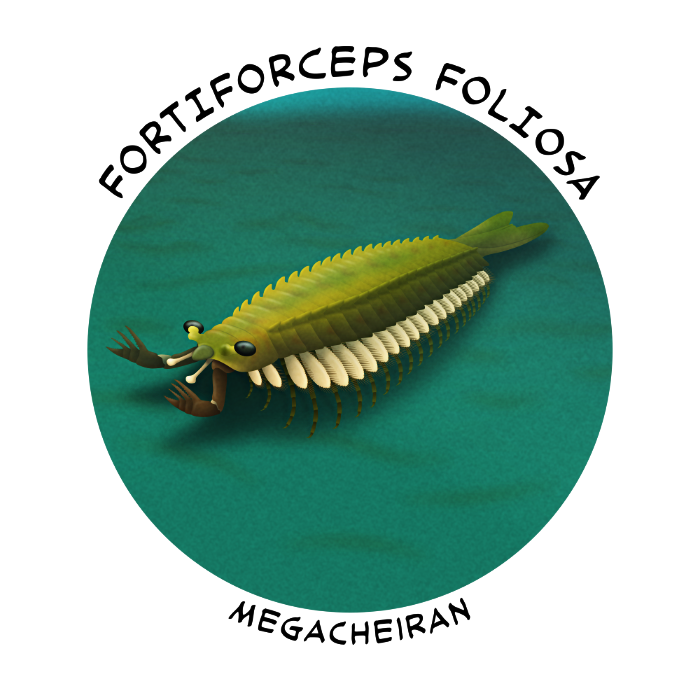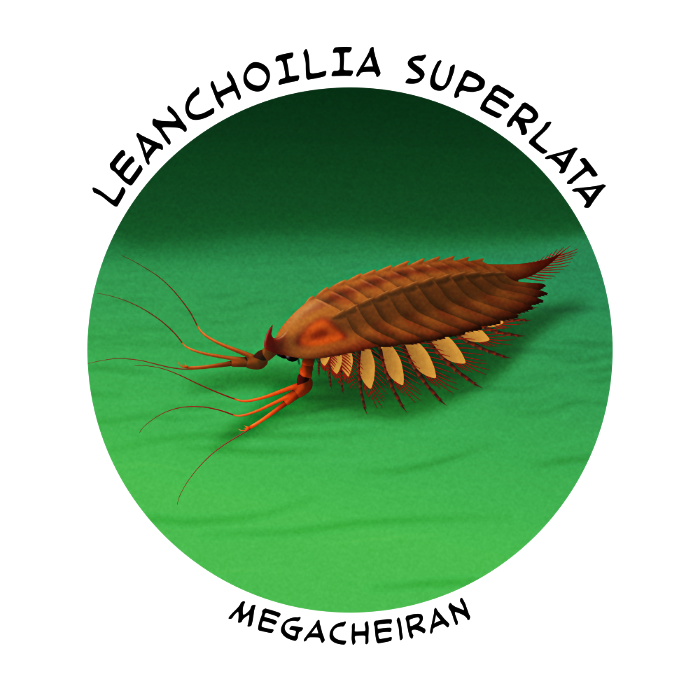The megacheirans were a grouping of Cambrian stem–euarthropods that had a distinctive pair of “short great appendages” on their heads with long finger-like spines. Their bodies were fully arthrodized into multiple hard-shelled segments, and their double-branched biramous limbs featured both legs and gill-fringed paddle-like flaps.
As small predators and scavengers they were important elements of some Cambrian ecosystems, and probably swam around just above the sea floor using their arm-like great appendages to grab and tear apart food items.
They weren’t really a distinct lineage, more of an “evolutionary grade“, usually considered to be in the “higer stem” close to the common ancestor of all the major euarthropod lineages, or possibly the very earliest actual euarthropods – but some studies instead place them as more “advanced” euarthropods closely related to chelicerates.
Part of this classification disagreement comes down to whether their great appendages were anatomically equivalent to the front appendages of radiodonts or whether they were convergently evolved, and whether one or both of those structures are also related to the development of antennae and chelicerae in later euarthropods or if they became highly modified into the labrum instead. It’s a subject of longstanding and ongoing debate so complicated that it’s known as the “arthropod head problem” – or sometimes “the endless dispute”.

Fortiforceps foliosa was a fairly rare megacheiran known from the Chinese Chengjiang fossil deposits (~518 million years ago).
About 4cm long (~1.5″), it had stalked eyes, 20 body segments, and a fluke-like tail. There was a pair of club-tipped antenna-like sensory structures on its head, and its stout great appendages featured three long scissor-like spines.
A recent analysis of its anatomy supports the idea that megacheirans were stem-euarthropods, and that their great appendages were derived from the front appendages of radiodont-like ancestors.

Leanchoilia superlata was a rather common megachairan in the Canadian Burgess Shale deposits (~508 million years ago), known from over a thousand specimens.
It was about 5cm long (2″) and had a hook-like “horn” at the front of its head, along with a fairly slender body with wide flaring lobes on each segment, and relatively long limbs. It had one or two pairs of downwards-facing eyes (the preservation of them is unclear) and its great appendages featured long whip-like feelers extending from the spines.
A recent study of a closely related species from China, Leanchoilia illecebrosa, shows it possessed a reduced labrum in front of its mouth, and supports the idea that megacheirans were very close relatives of chelicerates with their great appendages convergently evolved from a different set of front limbs.
